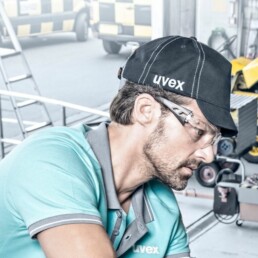When it comes to workplace safety, head protection is paramount. In Australia, where diverse industries range from construction and manufacturing to mining and logistics, the type of head protection used can make a significant difference in both safety and comfort. While hard hats are the traditional choice, bump caps are becoming increasingly popular. Here’s why you might consider using bump caps instead of hard hats.
Understanding the Difference Between Hard Hats and Bump Caps
Hard Hats
These are designed to protect against heavy impacts and falling objects. They are essential in environments where there is a high risk of severe head injury.
Bump Caps
These are lightweight head protectors intended to shield the head from minor bumps, scrapes, and knocks. They are not designed to protect against falling objects but are ideal for environments where the risk of such impacts is low.

When to Choose Bump Caps
- Low-Impact Environments: In many workplaces, such as warehouses, maintenance shops, and production lines, the risk of head injury from falling objects is minimal. Here, bump caps provide adequate protection against incidental contact with stationary objects like pipes or low-hanging structures.
- Enhanced Comfort: Bump caps are significantly lighter and more comfortable than hard hats. They allow for better ventilation, reducing heat build-up and making them ideal for hot/humid climates. This comfort leads to higher compliance among workers, ensuring they keep their head protection on throughout their shifts.
- Improved Mobility: In jobs requiring a lot of movement, such as rail maintenance or manufacturing, the slim/low profile of bump caps allows for greater freedom of movement. They are less likely to get in the way or be accidentally knocked off, providing continuous protection.
- Cost-Effectiveness: Bump caps are generally more affordable than hard hats. For businesses operating in low-risk environments, using bump caps can be a cost-effective solution without compromising on safety standards.
- Increased Acceptance: Workers are more likely to wear bump caps consistently due to their lightweight and less obtrusive design. This increased acceptance can lead to better overall safety compliance and fewer injuries.
Specific Use Cases of Bump Caps
- Warehouse Operations: Workers in warehouses often face risks from moving equipment and shelving but less from falling objects. Bump caps provide adequate protection without the discomfort of a hard hat.
- Transport and Logistics: Drivers and handlers in the logistics sector benefit from the lighter, more comfortable bump caps, especially during long hours of loading and unloading cargo.
- Automotive & Rail Industries: Mechanics and technicians working in cramped spaces benefit from the reduced bulk of bump caps, which allow them to work in confined areas without hindrance.

Regulatory Compliance
In Australia, workplace safety regulations require employers to assess the risks in their environments and provide appropriate head protection.
uvex bump caps should comply with the EN 812 standard, which ensures they provide adequate protection for the wearer. The EN 812 standard specifies the physical and performance requirements, methods of testing, and marking requirements for industrial bump caps. Compliance with EN 812 ensures that bump caps meet rigorous safety criteria, offering essential protection for workers in various industries.
While hard hats remain indispensable in high-risk environments, bump caps offer a viable and often preferable alternative in many low-risk workplaces. Bump caps are designed to protect against bumps and scrapes caused by the wearer’s head striking hard, stationary objects, but they are not intended to provide protection against falling or flying objects. However, they provide sufficient protection, enhance comfort, improve mobility, and encourage compliance, all of which contribute to a safer and more productive work environment. Employers should assess their specific workplace risks and consider incorporating bump caps where appropriate to ensure the best combination of safety and comfort for their workers.
Contact us now to talk to uvex head protection specialist.